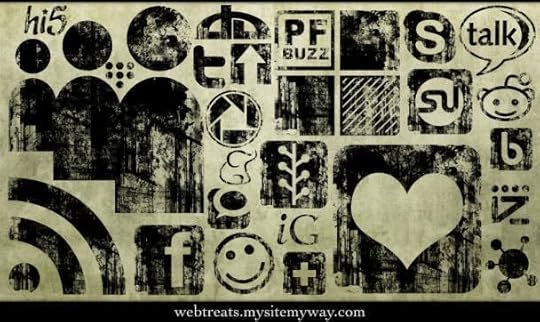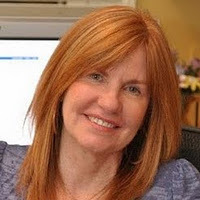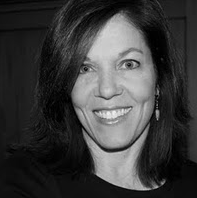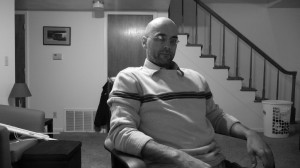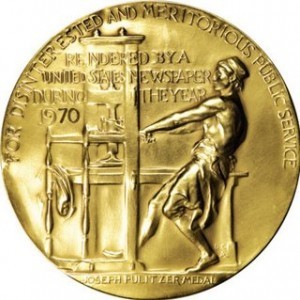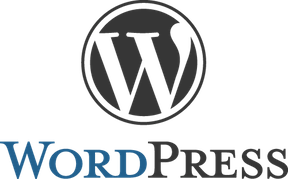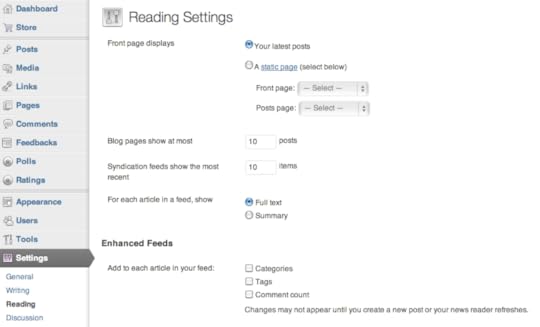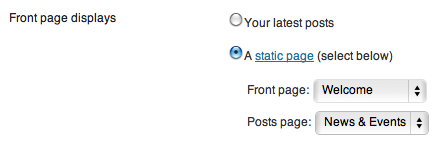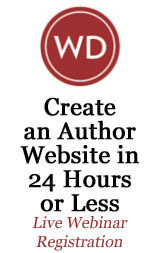Jane Friedman's Blog: Jane Friedman, page 198
December 14, 2011
Video Interview: The Future of Publishing
Earlier this year, I had a video chat with Jon over at Children's Book Insider about the future of publishing, among other things. Please overlook any funny face you see in the screen capture (a sure-fire sign I'm making a really important point). It's a 24-minute conversation. Click here to listen if the above video does not appear (or work).
December 13, 2011
How Social Media Can Change Your Life
Sometimes I find myself defending social media to the experienced user and beginner alike. It can be easily accused—and rightly so—of being full of shameless self-promoters, shrill marketing, and naked people.
That's only one side, though, and it doesn't have to be the side you engage in or tolerate. Just because you have to throw away junk mail, turn the channel during a commercial, or ignore a telemarketer doesn't mean you'll decide to stop receiving mail, ditch the TV, or lose the phone. You get smarter about how to avoid (or stop) the behavior you don't like.
I'd like to share with you 6 brief stories of how social media has enriched my life in ways that couldn't have been possible before—and why I continue to be an advocate for it and teach it as a way of building platform.
1. Darrelyn Saloom
I first met Darrelyn at a Writer's Digest event in December 2008. (Here's a story she wrote about that.) When she attended the event, she was not involved in social media. Within six months, she started participating on Twitter (@ficwriter), and writing guest posts for my blog at Writer's Digest. Without this online glue to keep us in frequent contact, I would have likely forgotten about her, and the relationship would've faded away. Instead, her social media participation grew, we stayed in touch as she attempted to get her book published (she now has a deal!), and I now write this post on her farm (in her writer's studio!) in Louisiana, my first trip to the state.
2. National Endowment for the Arts
In summer 2010, I was contacted out of the blue by the NEA. I had never before been in touch with the organization, nor had I ever met anyone there. The director of literature at the time had read a Publishers Weekly article that mentioned my Twitter presence, then read more about me here, at my own website. Because of my expertise in social media, he e-mailed me to see if I would be interested in participating on a grant funding panel focused on audience development in literature. And that's how I came to serve with the NEA.
3. Dan Blank
Several years ago, I compiled and blogged about a list of people who I thought provided the best insight (via blog) on the publishing industry. One of those blogs was by Dan Blank. Being the wise blogger that he is, he e-mailed me a thank-you when he saw the mention, and we started exchanging messages and looking for each other at industry events. Currently, we use each other to bounce ideas off of, and we support each others' efforts in service to the writing community, since we have similar philosophies and practices. I suspect that we'll hatch a very cool partnership project before it's all over!
4. Jeanne V. Bowerman
One day (well, perhaps on many days), Jeanne saw me tweeting about bourbon, and decided to say something, even though we'd never had any previous contact. We bonded over drinking on Twitter, then later, she decided to trek from New York to Cincinnati to attend the 90th Writer's Digest anniversary party that I was organizing (plus meet with a business partner in town). We hit it off marvelously, I asked her to write an article for Writer's Digest magazine, and we've been supporting each others' efforts ever since, both in person and online. Here's a post I wrote about Jeanne last year.
5. Brad King
I first became aware of Brad King through his talk at TedxCincy. After his talk, he asked via Twitter who wanted to get together for lunch. I responded via Twitter, although ultimately we didn't go out for lunch together. However, we stayed in each others' memories, and when he saw me on the speakers' roster for SXSW 2011, he dropped an e-mail asking if I'd like a pick-up at the airport in Austin. (Yes, Brad is that nice, adventurous, and awesome!) I went to dinner with him and two others headed to SXSW, and got a wonderful introduction to the spirit of that event. Brad is now writing a series of guests posts on this site.
6. Porter Anderson
As many of you know, Porter is responsible for weekly round-ups here on this site, Writing on the Ether. So how did this partnership start? The beginnings go back to Twitter. He e-mailed me in December 2010, to point me to an article suitable for my old blog series, Best Tweets for Writers. Over time, we communicated more and more on Twitter (especially via DM!), and met up at a few conferences. Then, a few months ago, I invited him to contribute, and he graciously accepted. (What I've done for him is up for debate—except add more work to his daily load!)
While you're smart enough to catch onto the pattern in these stories, here are a few of my own observations:
Relationships that start online are often solidified offline.
Relationships that start offline can continue and grow through online media.
There's a trust-building process. It takes time for the relationship to take off, because as we all know, when it comes to strangers on social media, we have to be wary of people who may be out solely to take advantage of our goodwill.
Even the smallest moment of reaching out to someone else on social media can turn into something big and meaningful for your career.
Many other relationships and opportunities have come to me due to social media and changed my life—not least of all, my current job—but this post has to end somewhere.
Let's hear stories of hiw social media has changed your life. Please share in the comments!
December 12, 2011
8 Writing Techniques to Win You a Pulitzer
Today's guest post is from writer Joe Bunting, who blogs at The Write Practice.
We all know there are novels and then there are "literary" novels. When you read Margaret Atwood, it just feels different than when you read Tom Clancy. And for some reason, these literary novels are the ones that win all the most prestigious awards like the Pulitzer Prize, the Man Booker Prize, and the Nobel Prize for Literature.
Literary authors are known for their unique voices and experimental styles. You might have learned not to write run-on sentences in school or to avoid beginning a sentence with "and," but literary writers often seem to flaunt their rule-breaking ways.
This is both good and bad. Literary novels can be difficult to understand, but they can also be beautiful to read, like poetry.
So if you're salivating to win a Nobel Prize, and just don't think your diplomacy skills are good enough to win the Peace Prize, here are eight techniques you can use to make your writing more "literary."
1. Write long sentences.
Long sentences can make for beautiful, complex prose that you want to read again and again to fully appreciate.
Hemingway, Faulkner (both Nobel winners), James Joyce, and all those 1920s modernist authors were known for their long, run-on sentences, full of conjunctions and lacking "correct" punctuation. Contemporary writers, like Cormac McCarthy and Tim O'Brien, do the same. Here's a quote from O'Brien's The Things They Carried which illustrates it clearly:
Now and then, however, there were times of panic, when they squealed or wanted to squeal but couldn't, when they twitched and made moaning sounds and covered their heads and said Dear Jesus and flopped around on the earth and fired their weapons blindly and cringed and sobbed and begged for the noise to stop and went wild and made stupid promises to themselves and to God and to their mothers and fathers, hoping not to die.
Isn't that beautiful?
2. Write short sentences.
Writing long sentences can get old. If you follow up an extremely long sentence with a short snappy one, you can whip your reader to attention. Notice how Cormac McCarthy does it in Suttree:
One thing. I spoke with bitterness about my life and I said that I would take my own part against the slander of oblivion and against the monstrous facelessness of it and that I would stand a stone in the very void where all would read my name. Of that vanity I recant all.
Try reading it aloud. Notice how that last sentence feels like a gavel, cracking in a loud courtroom?
3. Be lyrical.
Literary writers are interested not just in what their words mean, but in how they sound. The technical term for this is phonoaesthetics, the study of the sound of words and sentences. Like poets, literary writers want their words to melt on their reader's tongue like rich, dark chocolate. They want their readers to stop and say, "Mmm," and stare off into the distance contemplating all that is beautiful.
There are a few techniques writers use to make their writing more euphonic, including alliteration, assonance, and consonance, but the best way to develop your "ear" for lyrical writing is to read other lyrical writers very slow. You might pick up some Annie Dillard, William Faulkner, or Virginia Woolf.
4. Make an allusion to the Bible or Moby Dick or Milton.
Literary writers are well read. They realize their writing doesn't exist in a vacuum, and so they subtly pay homage to the classic writers who have gone before them, which also deepens the meaning of their own work.
To make an allusion, you use an image, character, or even a direct quote from another work of literature. These act as portals, coloring your story with the meanings wrapped up in the work you're referencing.
Also, it makes those who "get it" feel special.
5. Use an eponym to name your characters.
Another way to use allusion is to name one of your characters after a character in another work. This technique works as a kind of literary pun, and creates an implicit association, a shared relationship, with the character in the other work.
6. Be specific.
Literary writers often study the vocabulary of the subject they're writing about. They want their writing to be precise. For example, if they're writing about nature, rather than just talking about the trees, they might describe the tulip poplar, the white oak, the eastern red cedar.
If they're writing about birds, they might avoid describing them as the red bird or the blue bird, but rather the kingfisher, the painted bunting, or the yellow-bellied sapsucker.
7. Write a story within a story (or a story within a story within a story).
The story-within-a-story is one of the oldest literary techniques, and it's a simple way to create rich, multi-layered stories.
It works simply by having one of your characters tells another character a story, and this second story becomes the main story of the novel. Think Arabian Nights, where Scheherazade tells the Sultan story after story and eventually manages to make him fall in love with her.
Or Shakespeare's Taming of the Shrew, where the story of Petruchio "wedding and bedding" Katherina is set within another play about a drunk tricked into thinking he's rich.
Or Salman Rushdie's Midnight's Children, where the protagonist writes his memoirs as he narrates them to his mistress.
8. Have a wide scope.
Literary novels tend to have a wide, national or international scope, even if they portray local events. Hemingway, for example, often set his novels within the context of great wars, like World War I or the Spanish Civil War. Fitzgerald's Great Gatsby is considered a portrait of the "Lost Generation" and the Roaring 20s because of its memorable characters who were caught up in the decade's debauchery. Rushdie's Midnight's Children is about the rise and "fall" of India, from Independence to Indira Gandhi's injustices.
You may not want to win a Pulitzer, but if you do want to give your writing a touch of literary flare, these techniques are a good place to start. By far, the best way to learn more about these techniques, though, is to read more literary fiction. Here are a few good titles by author's I've mentioned:
For Whom the Bell Tolls by Ernest Hemingway
The Blind Assassin by Margaret Atwood
Blood Meridian by Cormac McCarthy
Midnight's Children by Salman Rushdie
A Portrait of the Artist as a Young Man by James Joyce
Absalom! Absalom! by William Faulkner
 Joe Bunting loves to write and to help other writers improve their careers and craft. He can be found at The Write Practice, an online and offline community for creative writers, and also on Twitter.
Joe Bunting loves to write and to help other writers improve their careers and craft. He can be found at The Write Practice, an online and offline community for creative writers, and also on Twitter.
December 11, 2011
What Does No One Agree With You About?
This week's question was:
What does no one seem to agree with you about?
I couldn't identify a pattern of response with this one, except for a general cheekiness (e.g., "my brilliance"). Sometimes it was difficult to tell if someone was being humorous or quite serious indeed. Here are the most unusual responses.
That American Beauty was a grossly overrated bit of pretentious mediocrity.
A writer should worry about their story and not the medium. Too many writers only write books, when other media might be more suitable.
—Christopher Humpries
Sex offenders need a lobbyist.
—Rayne DeVivo
Dieting is unnecessary and there are no bad foods.
—Meg Gerritsen Knodl
That celebrating birthdays is for narcissists.
—Leesy Elyse Boyajian
Now I open the question up to you. Leave your thoughts in the comments.
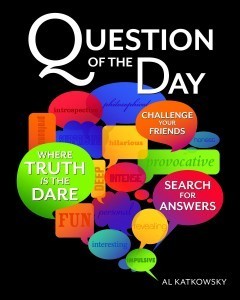 Every Thursday, I pose a question of the week on my social media networks, drawn from Question of the Day by Al Katkowsky. Read more here, and follow the chain of answers on Twitter with hashtag #qotw.
Every Thursday, I pose a question of the week on my social media networks, drawn from Question of the Day by Al Katkowsky. Read more here, and follow the chain of answers on Twitter with hashtag #qotw.
December 10, 2011
How Perfect Does Your Manuscript Have to Be?
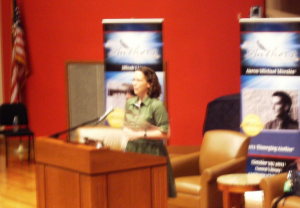
Keynoting the Indy Authors Fair (2011)
In the spring, I'm traveling to St. Louis to speak at the Missouri Writers Guild conference. (Check out my sessions and schedule here.)
As part of the conference faculty, I did a Q&A for their conference blog that discusses many topics, including:
How I got started with social media
The difference between marketing objectives, strategies, tactics, and tools
How perfect your manuscript must be before submitting to an agent or editor
One lucky commenter will receive a free query letter critique from me! So don't be shy about visiting and offering a response for your chance to win. (You must comment by December 13 to be eligible.)
December 9, 2011
The Big Mistake of Author Websites and Blogs
One of the easiest ways for an author to get a site up and running is to use Blogger or WordPress. As convenient as this is, and as wonderful as I find WordPress, this can lead to a critical error.
Authors end up using a blog as their website, but aren't interested in blogging.
So their site looks like a neglected, un-updated blog or a lackluster website.
Don't get me wrong: Both Blogger & WordPress can be used as effective site-building tools. But most new writers don't go the extra step of structuring their "blog" as a website. Let me explain.
Having a blog means you've got yourself a website. (Blog = site.) Blogging is simply a functionality or a way of presenting information or content on a website. A website may or may not feature a blog.
Blogger and WordPress systems focus on blogging functionality. They put the blog front and center, and assume that you are interested in blogging. If you are interested in having a site only, then you have to take steps to change the presentation.
You do not have to blog, and if you don't have much interest in the form, then please don't pursue it. As with any form of writing, it takes a considerable investment of energy and time to do it right and get something from it. (See my 101 crash course here.)
But I do recommend every writer have a website, and using WordPress or Blogger is a good way to do that for free and still conquer the learning curve. (See my post here.)
So, how shall we transform your blog-focused site into something more appropriate? We want to make the landing page static. The landing page is what first appears when people visit your site.
While technically such a thing is possible in Blogger, it is not straightforward. (If you want, search Google to view available tutorials.)
For that reason (and others!), I always recommend authors use WordPress when starting their first site. In WordPress, go into your Admin, and click on Settings > Reading.
You want to tell WordPress that the front page (the landing page) should display something OTHER than blog posts. To show you an example, visit janefriedman.wordpress.com. Here's what I did:
I created a page that I called Welcome . As you can see below, I've designated that as the front page of my site. The content you see on this page is what I typed right into the page content field. (Click here for a screenshot.)
I created another page called News & Events, but I left the content field blank. Because I've designated this as my "posts page" (see below), the content here is populated by anything I add to "Posts" in WordPress. (Click here for a screenshot.)
You could also designate NO page for posts (leave the option blank rather than selecting a page), and your site will not feature any blog posts, only static pages.
What I've done is basically create a website where blog posts exist, but they are not the focal point of the site. This is probably a desirable situation for many authors, yet they make the mistake of putting their blog at the center of things when it doesn't deserve that attention.
Take it from me: There's no need to blog to have a website. But please do set up your site properly to avoid the appearance that you do blog, but very badly!
Do you still need to create your own author website (or blog)? Are you looking for an in-depth tutorial to help you learn the ropes of that WordPress site you started, then abandoned?
I'm teaching a 2-hour live, online class on Monday, December 12, at 1 p.m. EST on how to build your author website in 24 hours or less. I focus on WordPress when it comes to nuts-and-bolts and step-by-step instruction, but I also discuss other tools you might consider, plus principles for good author websites.
Click here to find out more and register.
The cost is $79, and you get access to the recording of the event for a full year. You don't have to attend live if you're unable. During the live session, you have the opportunity to ask me questions, and no question goes unanswered. I only teach this session about once per year, so if setting up a site is on your agenda for the new year, don't miss this opportunity.
December 7, 2011
How to Confront the Fear of Public Speaking
Today's guest post is by author Deborah Niemann.
Last week as my adult daughter was driving me to a TV station in Indianapolis for a morning show to promote my book, Homegrown and Handmade, I said, "I guess I should be used to the fact that I feel like I'm really sick every time I do TV."
At first, she didn't understand what I was saying. I couldn't be saying that I had butterflies in my stomach, could I? After all, I've been on TV plenty of times from local news to Oprah. But that was exactly what I was saying. All morning long, I had been telling myself that I did not have food poisoning or the flu and that I would be perfectly fine. And I was right.
Believe it or not, I actually love public speaking. Lack of fear—or communication apprehension, as the experts call it—is not what separates public speakers from people who refuse to speak in public. All speakers have some level of communication apprehension. As they used to say when I was in Toastmasters, the goal is not to get rid of the butterflies, the goal is to make them fly in formation. In other words, you have to learn to control your fear.
But the first thing you have to do is confront your fear. What was I afraid of in Indianapolis?
I was afraid that I wouldn't look competent, and then no one would want to buy my book. So, I had to convince myself that there wasn't anything I could do that would make matters worse. None of the viewers knew who I was, so if I did a great job, some of them would buy the book.
But what if I boiled over the noodles or burned the stroganoff, or what if—in spite of the laws of cooking—the sauce didn't get thick? Those were all unrealistic fears, and even if something horrible did happen on the show, the worst thing that would happen in the real world is that I might sell fewer books. Or some people might be inspired to try cooking if a bumbling person like me could write a book on the topic!
One thing that you should always remember when you're speaking is that no one in the audience knows what you are going to do or say. If you make a mistake, in most cases, no one knows—as long as you don't point it out. If the sauce in my stroganoff wasn't perfectly thick enough, no one would have known.
Once you learn to control your fear, you can make it work in your favor. Some of the most exciting speakers are chaneling their fear into what looks like enthusiasm in their speech. After seeing a friend compete in a high level speech tournament and present the most animated speech I'd ever seen, he told us that it was because he was terrified, and all of his tension was coming out in his speech. It was incredibly moving, and he won first place in the competition.
I know that public speaking is not something that most people want to do, but if you want to sell your book, it is something that you will probably have to do at some point. The reason my publisher wanted me to write Homegrown and Handmade was because I had an established platform, and I wasn't afraid to speak in front of people. In fact, the acquisition editor met me at a conference where I was speaking to a crowd with standing-room only.
But I didn't start out in front of an audience that size. It wasn't that long ago that I was teaching classes in my kitchen to a group of four or five people. Start small. Volunteer to speak in front of a local group that is interested in your topic. Join a local Toastmasters club. As you get more comfortable, volunteer to speak in front of larger groups. As you polish your skills, you will gain confidence. Before too long, people will start to view you as an expert on your topic, and you will be one step closer to your publishing goals!
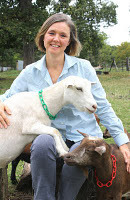 Deborah Niemann is a homesteader, writer, and self-sufficiency expert. In 2002, she relocated her family from the suburbs of Chicago to a 32-acre parcel on a creek in the middle of nowhere. Together, they built their own home and began growing the majority of their own food. Sheep, pigs, cattle, goats, chickens, and turkeys supply meat, eggs and dairy products, while an organic garden and orchard provides fruit and vegetables. A highly sought-after speaker and workshop leader, Deborah presents extensively on topics including soapmaking, breadbaking, cheesemaking, composting and homeschooling. Check out her farm, Antiquity Oaks, and its blog.
Deborah Niemann is a homesteader, writer, and self-sufficiency expert. In 2002, she relocated her family from the suburbs of Chicago to a 32-acre parcel on a creek in the middle of nowhere. Together, they built their own home and began growing the majority of their own food. Sheep, pigs, cattle, goats, chickens, and turkeys supply meat, eggs and dairy products, while an organic garden and orchard provides fruit and vegetables. A highly sought-after speaker and workshop leader, Deborah presents extensively on topics including soapmaking, breadbaking, cheesemaking, composting and homeschooling. Check out her farm, Antiquity Oaks, and its blog.
December 6, 2011
What Good Salespeople Know That Writers Should
Today's guest post is by author and business person Joanne Tombrakos.
What ultimately spurred my decision to self-publish was a quality that had served me well during the 25 years I spent selling commercials on radio and television stations.
Impatience.
Simply put, I got tired of waiting for someone else to publish me.
Good salespeople are like that. They don't like to wait. They like to make things happen. They don't like to be told no. They grow a tough skin toward rejection and work hard not to take any they receive personally. They look for another way, always willing to try anything once even if it means risking failure. Because they understand that every no is really just a step closer to a yes. And standing still and waiting … well that just isn't an option if you want to go somewhere.
I tried to quell this part of my personality when the agent who believed in my novel took it on during one of the worst times in recent economic history. I was told that this was how publishing went. Slowly. At a snail's pace. No one and nothing moved fast, and if I wanted to make it a career, I would have to get used to it.
I didn't. In fact I just grew more impatient. I started following people like Seth Godin and Jane Friedman who talked about the changing world of publishing. I learned quickly that with or without a traditional publisher I was still going to have to sell. I was a writer now, but a writer in a new and increasingly noisy landscape. Knowing how to sell was an asset that would give me a competitive edge.
As a former sales professional turned writer, here's my advice for anyone wanting an advantage in today's marketplace.
1. Believe in your product.
Good salespeople believe in what they are selling. And even when they are unsure, they pretend really well. I have met so many writers, who when you ask them about their work, belittle the value of it. If you are trying to sell yourself to an agent or to a publication in search of a review, you better believe in your work. Because if you don't, no one else will.
2. Writing is an art.
So is selling. In fact, selling is just another form of story telling. A good salesperson does not sell anyone anything. They simply engage a potential customer until they convince them to plunk down some cash. Yet your typical writer recoils at the idea of selling. Here's a news flash. It's almost 2012 and we live in a very crowded media environment. If you want to be read, you have to learn to tell more than just the story in your novel. You have to sell it.
3. Numbers count.
Any seasoned salesperson knows that the more you prospect, the greater the chances you have of closing a deal. Traditionally it is referred to as the sales funnel. The mouth is very wide at the top. That is where you are creating lots of attention that hopefully will translate into real interest. The funnel gets narrower at the bottom when it gets closer to making a decision and taking action. For most writers, action means buying your book. Not every potential reader will buy your book. But the wider your net, the greater your chances of catching something.
4. No order is ever too small.
This was the philosophy of the then struggling country music radio station I first worked for in Philadelphia in 1983. Little orders add up to bigger numbers, so don't discount them. I apply this today as I look for venues to review my book. I treat the individual book blogger with the same respect as I do when trying to get Oprah to take a look at the ranks of the self-published. I strive for book sales in the thousands but understand that the days when there might be only one or two eventually add up.
5. Be a pro.
A good salesperson is an expert in their industry. If you are going to self-publish as I did, do the research so you know the challenges. Strive to know not just as much as everyone else but to know more.
6. Create your opportunities.
Good salespeople never wait for someone else to do it for them. For me this meant self-publishing. If you go traditional, this might mean not waiting for your PR department at your publishing house to get you the interview you want, but making your own contacts.
7. Detach from the outcome.
Good salespeople never put all their eggs into one basket. They juggle multiple prospects at once and they work to not let themselves get attached to just one. Their belief in what they are doing is so strong that they know they will not close every deal, but they will close the deal they need to.
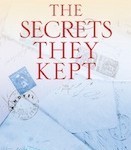 Joanne Tombrakos is a writer, business coach, speaker and author of a novel, The Secrets They Kept. She blogs on living and working after corporate America at One Woman's Eye. How to sell is one of her coaching specialties. For more information visit www.joannetombrakos.com.
Joanne Tombrakos is a writer, business coach, speaker and author of a novel, The Secrets They Kept. She blogs on living and working after corporate America at One Woman's Eye. How to sell is one of her coaching specialties. For more information visit www.joannetombrakos.com.
December 5, 2011
How We May Read
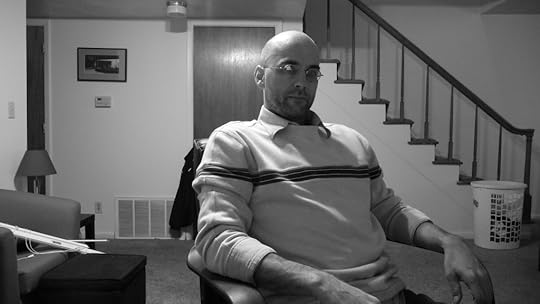
Ball State professor Brad King
Today's guest post is by Brad King, a professor at Ball State with a brilliant mind for emerging media and tech. He will be a regular guest here for a while, writing a series on how people read (in general) and how people read within the tablet/eReader environment. It's a great honor and privilege for me to present his work here.
1.
In August 2010, I sat down with my friend and colleague Prof. Jennifer George-Palilonis, the head of the graphics sequence at Ball State University's Department of Journalism, and asked her if she'd collaborate with me on a book project.
However, this wasn't just a simple book project. This year long project, dubbed Transmedia Indiana, would have multiple layers:
We would gather a group of 40-50 students from different majors (journalism, creative writing, public relations, history, theater) to plan, build, finish, and launch the book;
The book would be something more than just an interactive, multi-media story — it would extend outside its digital pages and leak into the real world — but the actual book itself would only exist on tablets and eReaders; and
This book would use real life artifacts from the Indiana State Museum in a manner similar to the book The DaVinci Code or the movie National Treasure.
For some, Transmedia Indiana may sound more like a game than a book. Others may see it nothing more than a glorified multimedia story.
For us, we saw this as a grand opportunity to study and learn how we may soon read and examine what that means for authors in the tablet age. Since the book would require readers to interact with our content and (possibly) the real world, we thought it might be interesting to study not only how people read within an interactive environment, but also how people are motivated to act in virtual and real spaces.
That was the real fun.
2.
The first time I heard the word "transmedia" was in early 2005. I had just taken a job at MIT's Technology Review, the nation's oldest technology magazine. I was in charge of creating its online operation, which meant amongst other elements I needed a plan to build out the editorial operation. One writer we had access to was Dr. Henry Jenkins, the man who founded the university's Comparative Media Studies program. I'd met Henry in 2002 when John Borland and I were working on Dungeons & Dreamers, a book about game culture, and I was excited about the possibility of having his work on my site.
We went to lunch in Cambridge, Massachusetts, to discuss his interests. He was working on a book about the convergence of media, he told me, and he wanted to explore some of that at Technology Review.
I agreed to his terms as soon as I possibly could. When I returned to work that day, I e-mailed John to tell him that I knew my days in journalism were coming to an end. This transmedia storytelling sounded way too interesting.
3.
The tablet and eReader environment create an interesting paradox for writers.
Dale Sheppard (2011) found that while students were more engaged in texts delivered in an interactive environment, they didn't necessarily learn more. In fact, some became more passive as they anticipated the device delivering information, thus reducing the likelihood the human would be proactive in terms of information gathering.
That disturbing thought is offset by the reality that digital reading environments offer the potential to create complex, interconnected relationships that are easily navigate-able by readers, allowing us to reconceptualize what the experience of reading may look like (Kostic 2011). And we are starting to get a sense of what readers expect within this environment: searchability, access to companion information alongside the primary information, and shareability. (Lam 2009)
The interactivity engages readers, although it's unclear how much they take away from the experience because of selective attention. Yet this device creates a framework for which we might tell increasingly complicated and networked stories.
The problem for authors (or writers? or storytellers?) is that nobody is quite sure what tools to use to tell stories within this environment, and there are no ubiquitous tools like WordPress that enable building stories within that environment.
As an academic and a writer, that means it's time to research and prototype so we can develop the skills — and the tools — to tell rich stories that resonate with readers.
4.
Ask the wrong person to define transmedia storytelling and you'll end up on the business end of a rant. Jenkins (2006) initially defined the term loosely as a story that takes place either across multiple delivery mediums or as a story world in which multiple stories take place (e.g. Star Wars and its companion comic books, games, books, ect.) For many, his second definition — which sounds more like an entertainment franchise and less like a story — became his de facto position on the subject.
Brooke Thompson (2010) built upon that definition, focusing her efforts on the interactive elements within a story. Multiple media stories are those with no interaction (e.g. a story with a picture and video that sit separate); cross-media stories are those with one-way or limited interaction (e.g. you read a story, then click a video, then listen to audio); transmedia stories are those with complex, spider-web-like interactions that encourage exploration across mediums.
Jenkins, Thompson, and countless others are helping the framework to tell these stories even if we haven't quite yet figured out how those stories will "look" and "feel" within the tablet and eReader environment.
5.
What's missing is something beyond frameworks, software tools, and storytelling. We're missing pleasure, which is part of a strand of research called Human Factors that blends traditional usability (e.g. how many seconds does it take you to click that button?) with psychology, cognitive science, and pleasure in order to understand how the people within a system affect that system.
For instance: There is an "ideo-pleasure" associated with purchasing environmentally sound products that may override a device that is less functional or that costs more. Our pleasure centers impact our relationship with the objects we use.
In the case of reading printed books, there is a "social pleasure" associated with pulling out your favorite novel on the subway. People can see you reading, and the book says something to those around you about the kind of person you are in a very general way. Remove that social pleasure, and the act of reading is changed. (I'll address the pleasure people often express with books — "but I just love the feel of the paper" — in a few weeks.)
This tablet-based environment removes some of that particular social pleasure. What's in its place? We don't yet know. Maybe transmedia narratives will create an agency within real space that replicates that type of "social pleasure" that has been lost. Or maybe authors who understand how to create that within a tablet-based environment will have a leg up on those who don't.
6.
We're nearly 3 months into our Transmedia Indiana project, and we're about to launch our first research study as we try to suss out what makes a good reading experience within the interactive, tablet environment.
I've also launched a companion project, a two-year research study, in which I'll be building personas of readers by crunching data taken from surveys and interviews in order to better understand how, where, and why we read. (That's my not to subtle pitch for you to take my survey and pass it along to your friends!)
Along the way, Jenn and I will be prototyping, testing, and writing about our research both in peer-reviewed journals and in places like Jane's blog, where we can bridge the gap between research and the real world.
Expect dispatches from me two Mondays each month (mostly), and feel free to follow my research at my teaching site or my informal writing about my work on my personal site.
Works Cited
Jenkins, H. 2006. Convergence culture: Where old and new media collide. NYU Press.
Jordan, P.W. 1998. "Human factors for pleasure in product use." Applied ergonomics 29 (1): 25–33.
Kostick, A. 2011. "The Digital Reading Experience: Learning from Interaction Design and UX-Usability Experts." Publishing Research Quarterly 27 (2) (June): 135-140.
Lam, P., S.L. Lam, J. Lam, and C. McNaught. 2009. "Usability and usefulness of eBooks on PPCs: How students' opinions vary over time." Australasian Journal of Educational Technology 25 (1): 30–44.
Sheppard, D. 2011. "Reading with iPads–the difference makes a difference." Education Today (11) (August): 12-15.
Thompson, Brooke. 2010. Towards a definition of transmedia…: Brooke Thompson: GiantMice.com. Giant Mice. April 16. http://www.giantmice.com/archives/2010/04/towards-a-definition-of-transmedia/.
December 4, 2011
Has My Advice Helped You? Here's How to Help Me.
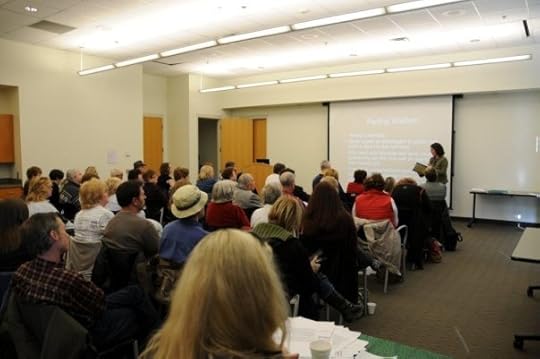
Teaching near my hometown in Evansville, Indiana
I started blogging on a near-daily basis in 2008. As some of you know, I recently transitioned my blog from Writer's Digest to my own platform. Readers are still finding and discovering me here at the new site.
If my blog has helped you (whether in 2008, 2009, 2010, or today), you can help me by nominating my blog as one of the Top 10 Blogs for Writers. This is the biggest annual contest for writing blogs.
Click here to nominate my blog by leaving a comment. (My blog is JaneFriedman.com.) You can only nominate one blog, and you have to give the "why" behind your nomination.
I appreciate your support and hope to continue providing some of the best information and advice available online—and not just from me, but from valuable guests such as former CNN journalist Porter Anderson, author Darrelyn Saloom, media professor Brad King, and many others.
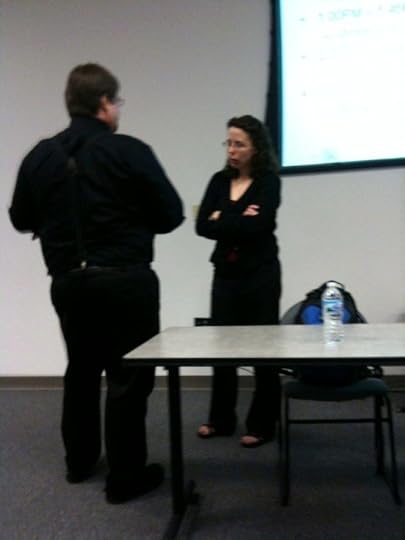
Consulting with a writer at the Ohioana Festival in Columbus
Jane Friedman
- Jane Friedman's profile
- 1882 followers


